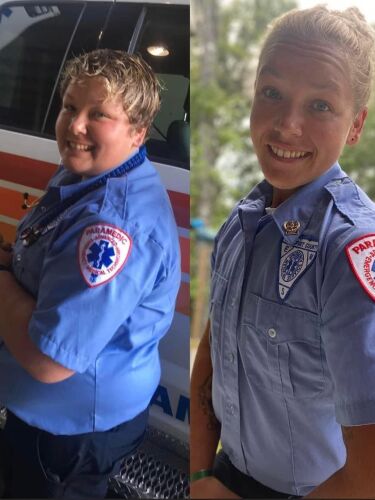Renal failure affects the body much more than being unable to make urine and filter plasma. Long term effects of renal failure can create hidden consequences if we give a certain medication or give a fluid bolus unnecessarily.
What types of things do we need to consider in someone with advanced renal failure who missed a dialysis session (or two)?
What happens when we are called to respond to the dialysis clinic for someone with syncope?
In this article, we will review the effects of chronic renal failure and what options patients have when it comes to starting dialysis. We will also review what we as healthcare providers need to know when assessing and treating a person who is on dialysis and how our treatment options change.
Dialysis patients require additional considerations when caring for them, whether their reason for calling EMS was dialysis related or not.
Whether you are responding to the local dialysis center or to a residence, caring for someone who gets routine dialysis can be daunting if you aren’t familiar with the lifestyle. And dialysis is not only a treatment that improves quality of life, but it is sometimes referred to as a lifestyle change in itself.
Dialysis is required when the patient has less than 15% kidney function remaining. Ideally, this condition would be known well in advance and preparations can be made by the patient and healthcare team. End stage renal disease (ESRD) is usually years in the making and is strongly attributed to chronic hypertension and diabetes [1,2].
Patients may be given the option of choosing from hemodialysis or peritoneal dialysis. This decision will be made based on recommendations by the healthcare team, the patient, and the patient’s compliance and lifestyle.
Hemodialysis
Hemodialysis can be done three times a week in 4-6 hour sessions in a clinic setting or can be done daily at home for shorter periods of time, thus leaving more flexibility in being able to continue working or enjoying activities. Home hemodialysis can be portable, and patients can travel and take their supplies with them on vacations [7].
Hemodialysis may initially be done thought a large bore central line, but later, the patient will have a graft or a fistula, usually in their arm, to perform the dialysis through. A graft or a fistula requires a vascular surgery and has had to heal over the course of several weeks before being able to use it for dialysis [5,8]. A graft or a fistula is under partial arterial pressure so the vessel will be as big as an adult’s little finger. When you press gently on it, you should feel a “thrill” or a soft vibrating along the vessel wall.
Peritoneal dialysis
Peritoneal dialysis is the second option, and this requires surgically implanting a catheter into the abdomen that is between the peritoneal membrane and the abdominal wall. Each time this process is done, it is referred to as an “exchange.” The patient’s own membrane acts as a filter. Dialysis solution called, dialysate is infused into the abdomen where waste products are drawn into the solution through osmosis and the solution is then drained and discarded.
This can be done manually, every few hours, or throughout the night with a machine called a cycler in a process called continuous cycler assisted peritoneal dialysis. This is ideal for patients in that they can hook themselves up to their dialysis machine at their bedside and sleep through most of the treatment. They are free to go about their day without interruption or they may only have to drain once during the day instead of every 3-4 hours [9]. The amount of time the dialysate is prescribed to stay in the body is called, dwell time [3].
Dialysis complications
If a patient doesn’t eat/drink what they should, and they don’t stick to their dialysis schedule, problems can occur quickly [11]. Because the kidneys are responsible for blood pressure control through the renin angiotensin system, the patient’s blood pressure may be very high [10].
Because the kidneys regulate water and electrolyte balance, there will be fluid retention, and sodium and potassium retention. And, because the kidneys are responsible for waste elimination through urine, if a patient misses dialysis, they will have a buildup of waste products which will lead to your patient becoming very sick and, possibly, confused.
EMS cannot cure a person who needs dialysis. However, we can remember the following guidelines for caring for someone with renal failure to minimize further complications from the disease process:
- Do NOT give renal failure/dialysis patients fluid boluses unless they are truly hypovolemic. Chances are they are fluid overloaded to begin with, but if they just got done with, or were in the middle of hemodialysis, they may truly be hypovolemic. If needed, consider a partial fluid bolus and re-assess frequently.
- Do NOT access their graft/fistula with a needle. This device was created by vascular surgeons strictly for the intention of dialysis [5,6].
- Do NOT use the arm with the graft/fistula for drawing labs or getting blood pressures. Any manipulation to the graft/fistula can make it unusable in the future and this would mean the patient must go through another surgery to create another graft for dialysis.
- Do NOT use an IV tourniquet on the graft arm. There should be no need anyway since you won’t be drawing blood or starting an IV in that arm, but it should still be mentioned.
- DO palpate the graft/fistula gently.
Sara Cathey said her colleagues at Beaufort County EMS, the fire department and the emergency department supported her
References
- Protecting a hemodialysis fistula. McConnell, Edwina., Nursing Magazine November 2002, Vol 32, Issue. 11. Page 18.
- Renal Failure and Dialysis Patients: What the EMS Provider Should Know. EMS World Magazine. June. 2005.













